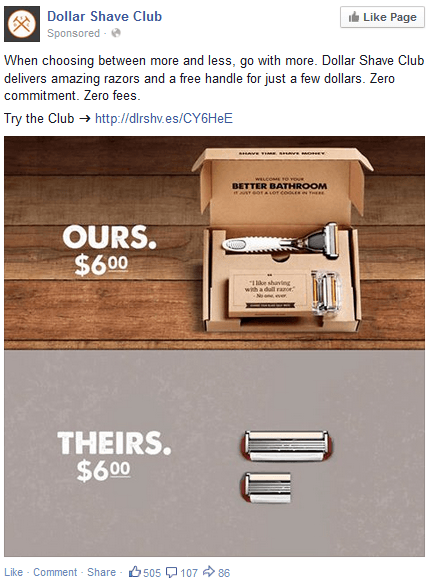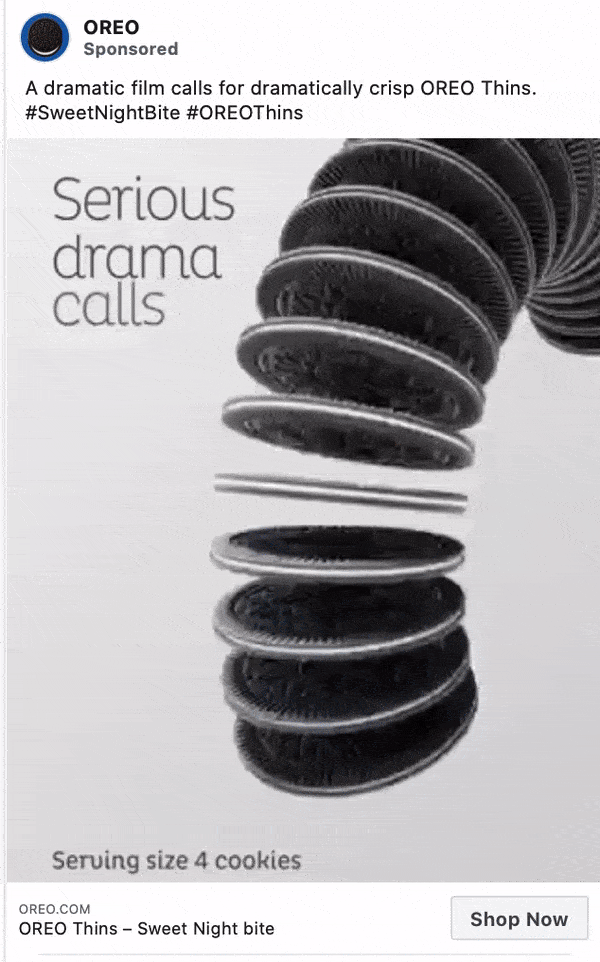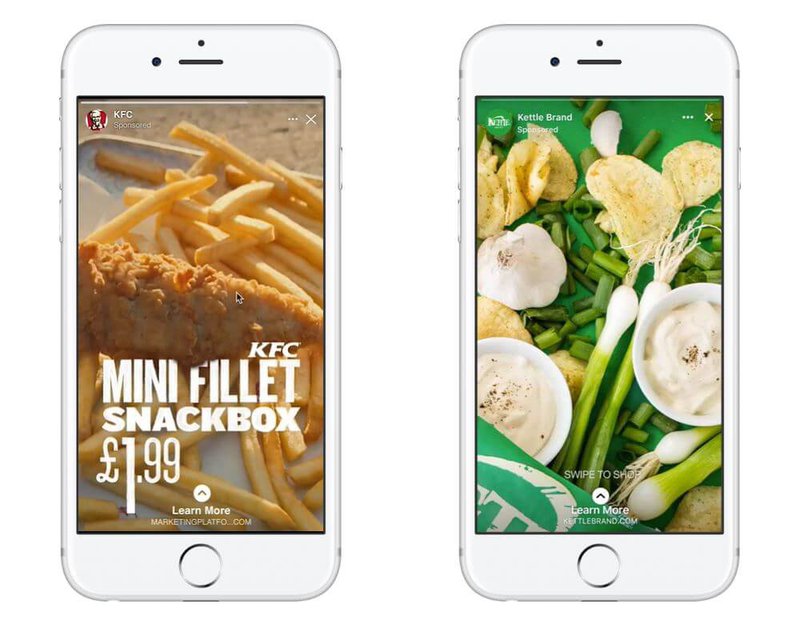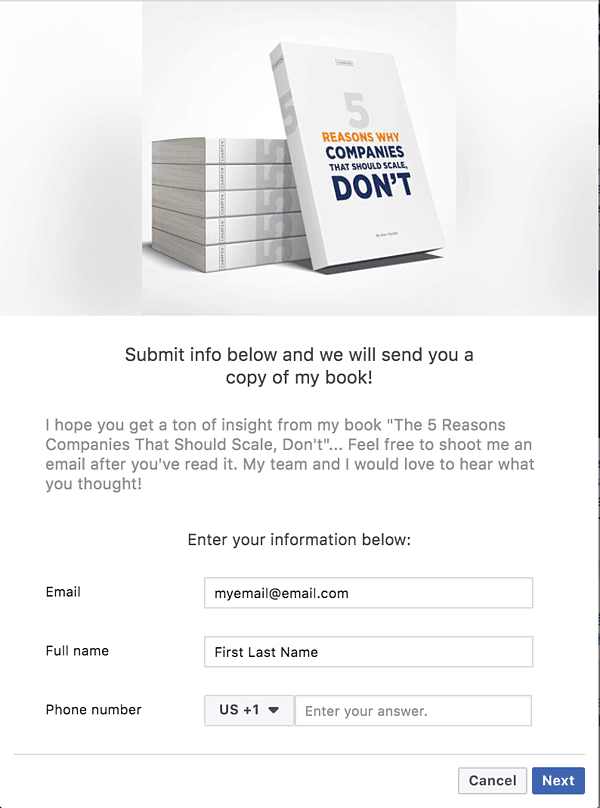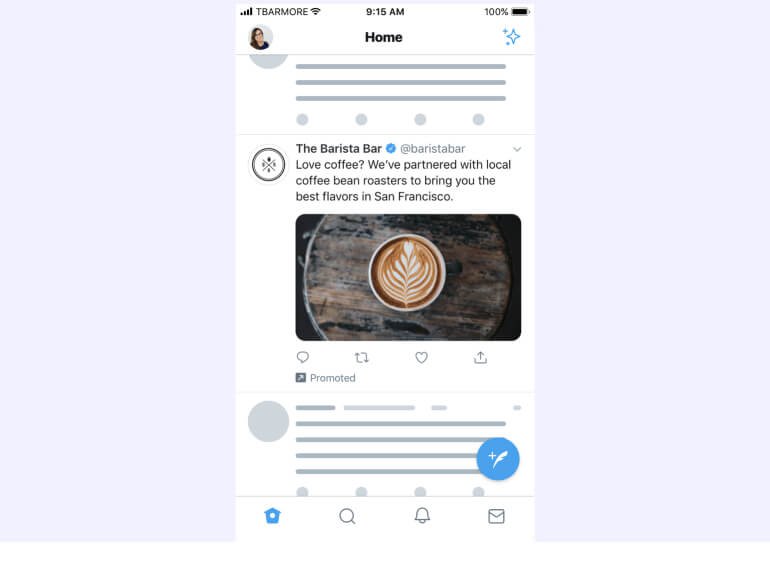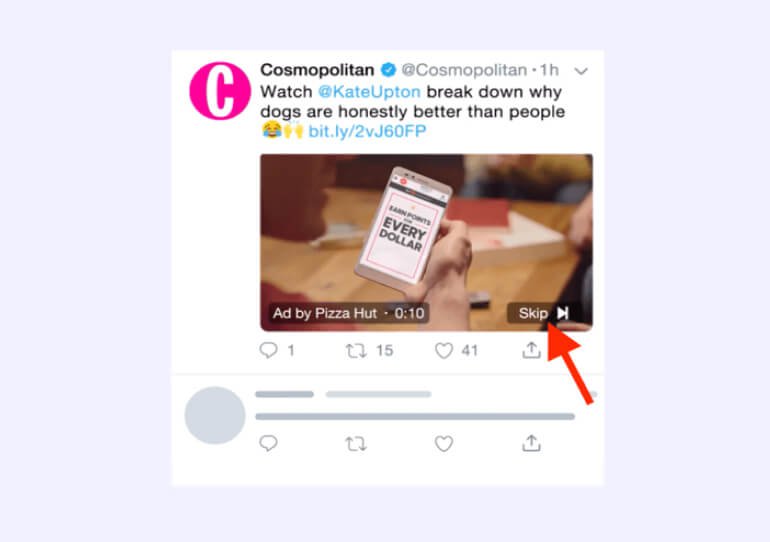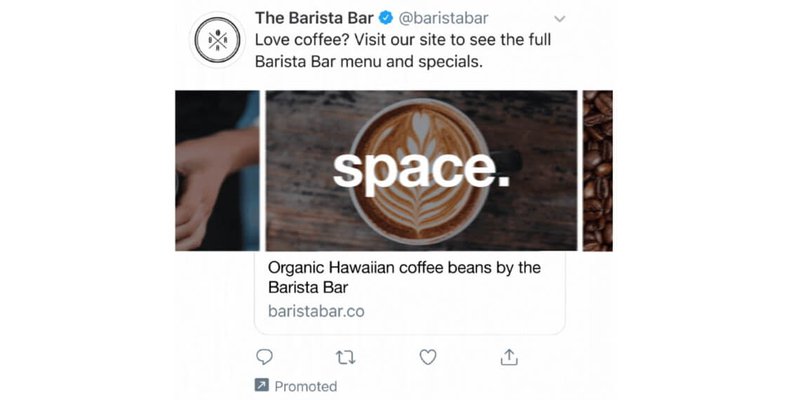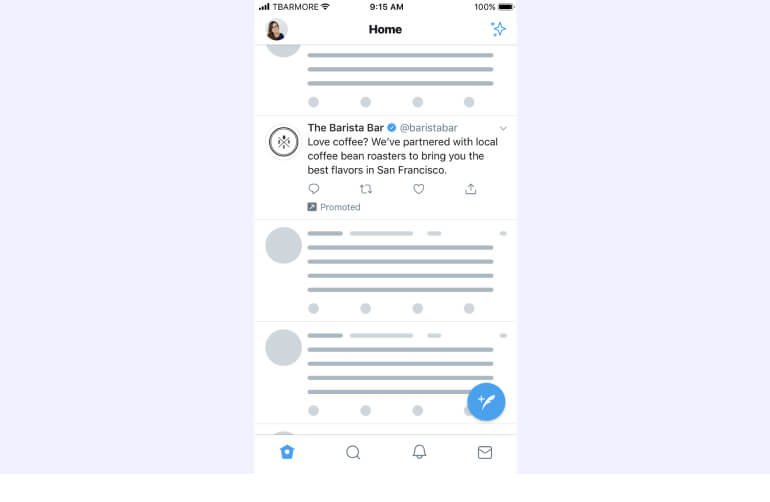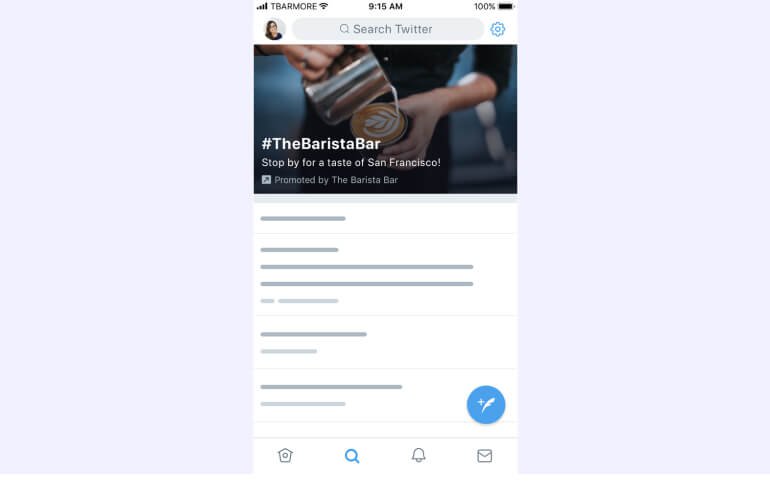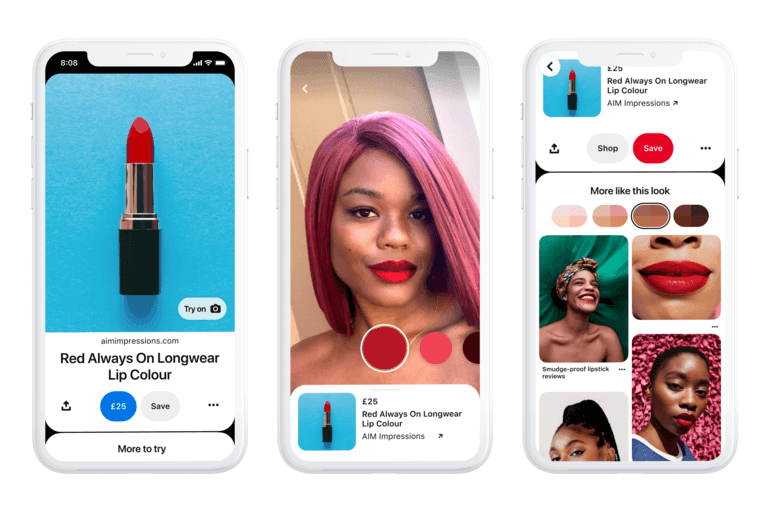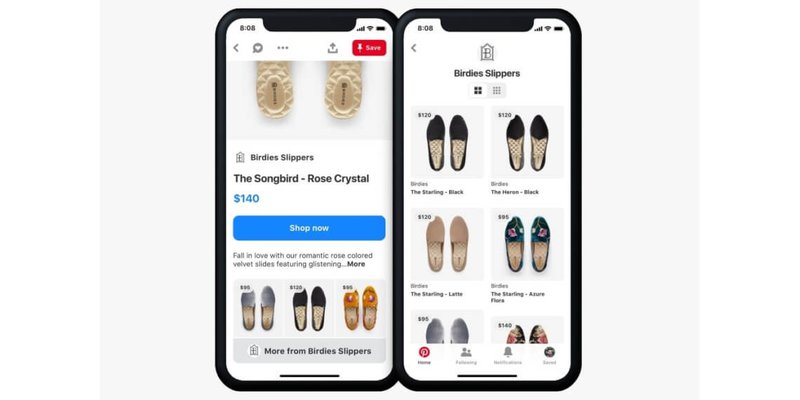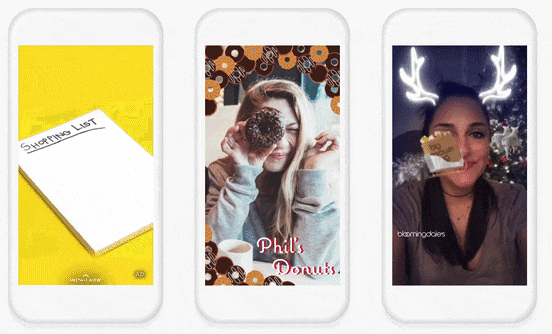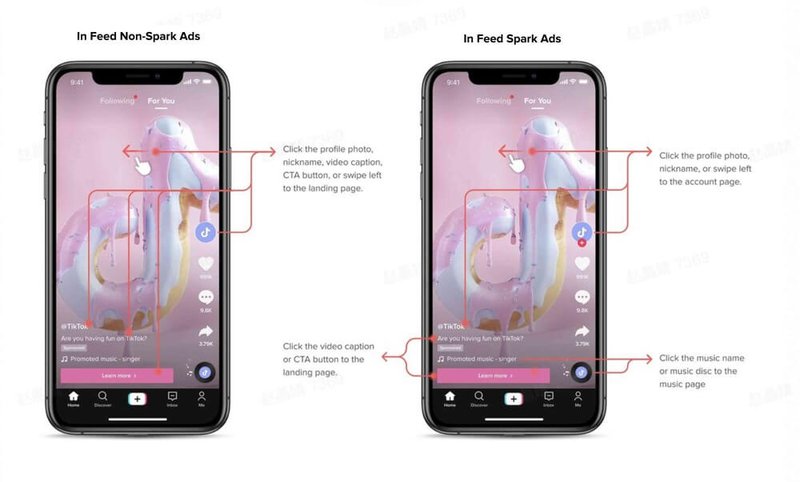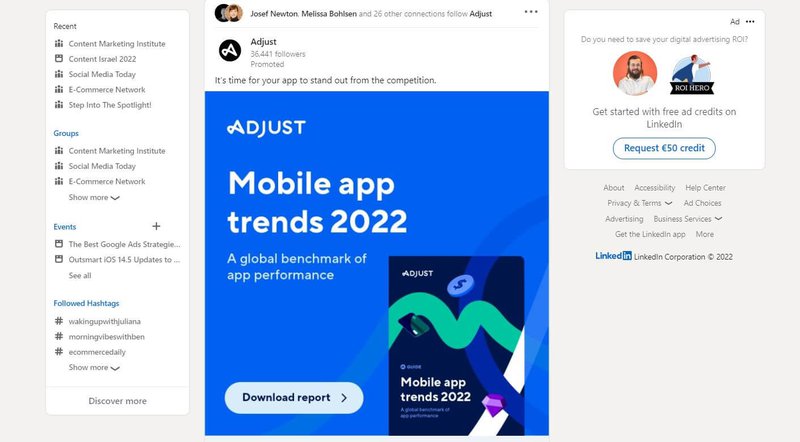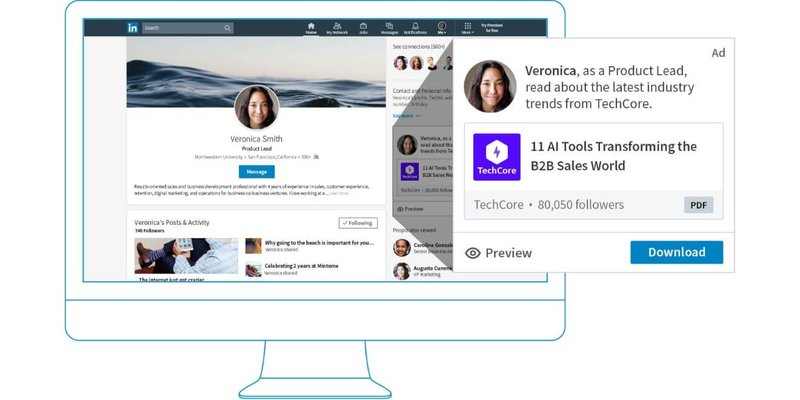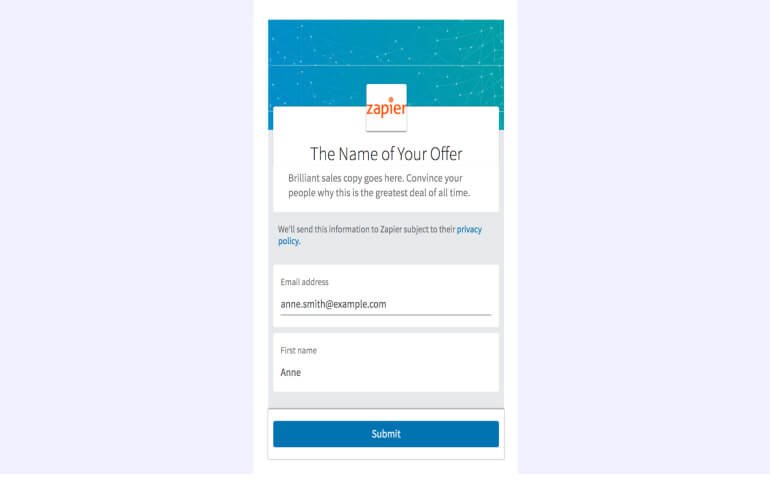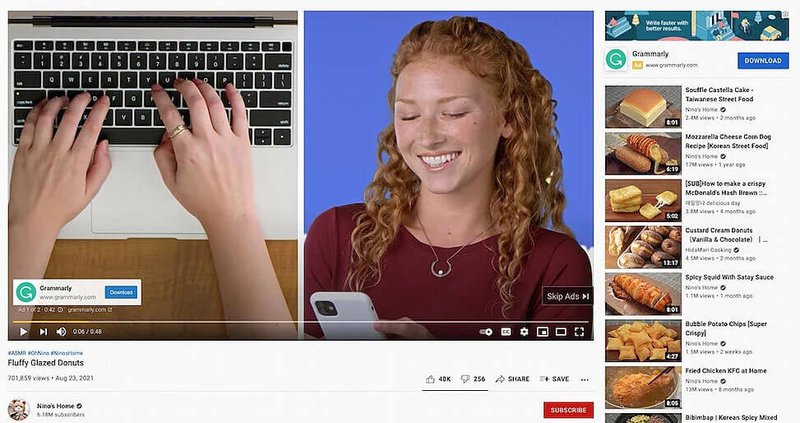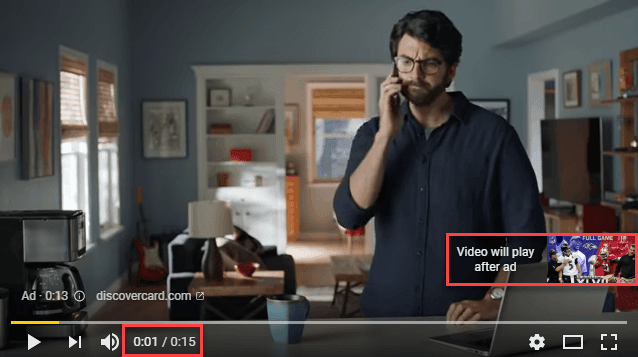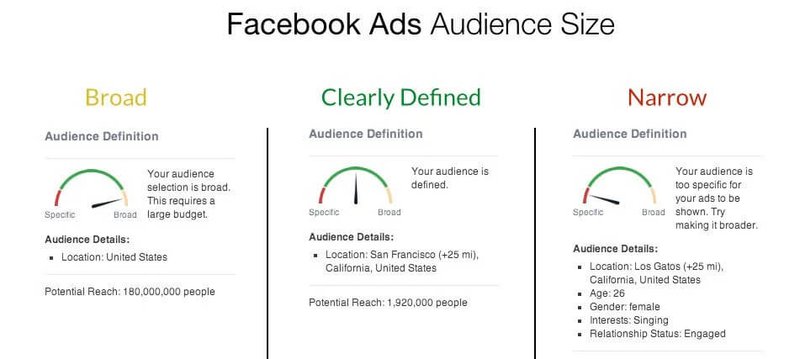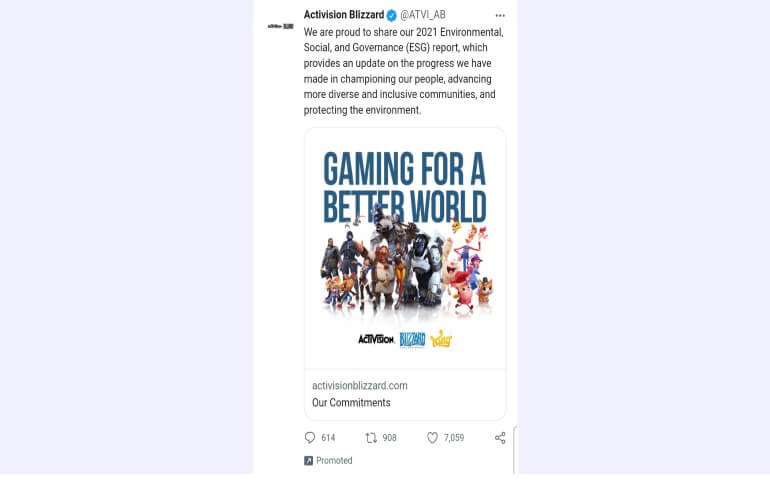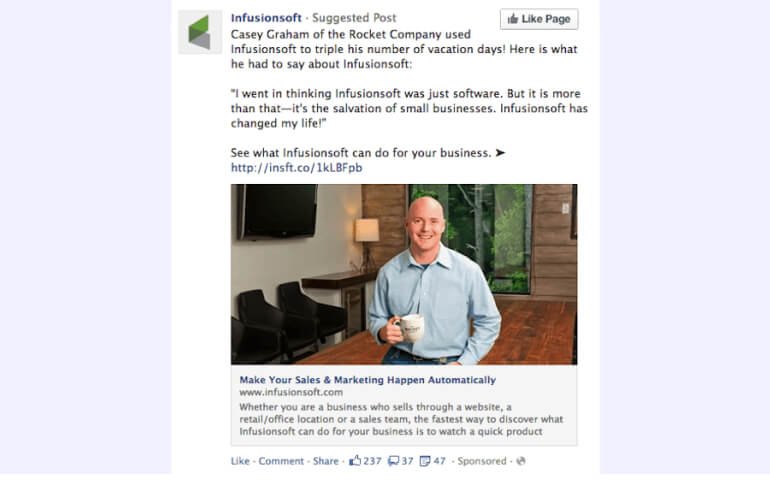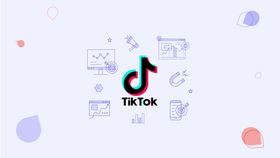The Ultimate Guide to Social Media Advertising
Need a refresher social media ads? Here are all the different types of ad types and best strategies to use on each social media platform. Enjoy!
Published November 5, 2024

Social media advertising is a great way to reach your target market and increase brand awareness. If you do it right, it can be an incredibly cost-peffective marketing channel. However, if done incorrectly or without a plan in place, social media advertising can be a waste of time and money.
Over the last 3 years, we've helped brands make $164M+ with social media ads campaigns and we've learned a thing or two. In this post, we're going to cover all the various ad campaigns you could set up on social, the pitfalls to avoid, and some of the latest strategies you should test for your next project.
Why use social media ads?
Social media ads are a great way to reach a large audience, especially if you're looking for new people in your target market. They're also great for increasing your brand awareness, growing brand recognition, retargeting existing users, and launching a new product.
Social media ads are much more powerful than traditional advertising channels (such as print ads) at targeting specific consumer segments, displaying ads based on specific keywords, and retargeting existing customers.
Types of social media ads
There are several different types of ads on social media. Some are more popular than others, but each one has its own purpose and audience. Let's look at each one.
Facebook Ads
Facebook is the biggest and most widely used social network in the world, with billions of users. It’s also an excellent platform for advertising your business because you can reach users based on their interests, location, and other pages or brands they follow.
Facebook image ads
This is the basic type of Facebook ad that features an image. It’s easy to create and is effective in brand awareness campaigns. You can use it to direct visitors to your page or promote a product.
Pro tip: your existing social media posts with high engagement have the potential to perform better as ads. Turn some of them into ad campaigns and see how they do.
Here is a creative photo ad from Dollar Shave Club.
Pro tip: need help with your Facebook Ads strategy? Talk to one of our vetted advertising consultants to see what can be improved.
Messenger ads
Facebook Messenger ads show up in your chats tab and messenger stories. After clicking the ad, users are redirected to their inbox to start a conversation. Messenger ads allow you to personalize your campaign creatively and reach your audience more effectively. You could also use these for cart abandonment.
Here's an example from Jasper's market.
Video ads
Video ads help brands tell their stories. Integrating a Facebook video ad into your social media strategy can drive ad recall and boost brand awareness and intent lift.
The best-performing video ads are creative and, most importantly, relatable. The Oreo Thins is a perfect example.
There are four types of video ads you can make - in-stream ads, marketplace video ads, video feed ads, or stories ads.
Pro tip: if you choose in-feed video ads, use captivating thumbnails that engage with the user as they scroll and motivate them to click.
Facebook Stories Ads
Facebook Stories Ads appear between Facebook organic stories. They let you reach new and current customers through a full-screen vertical ad format.
Look at this creative example from Kettle Brand. Users can swipe up to shop from the brand. Or, they can click on the logo in the upper left corner to visit their Instagram page.
Carousel ads
Facebook carousel ads allow you to display up to ten images and videos in a single ad with unique descriptions and links. This ad format is perfect for showcasing several products, how-to guides, or telling stories. The most engaging carousel ads are interactive and encourage viewers to swipe for more.
Lead ads
Facebook lead ads enable advertisers to collect new leads to generate conversions. Unlike other lead generation methods, users are not redirected to an external landing page. Instead, they can complete and submit the form right on Facebook.
Instagram Ads
Instagram may have fewer users than Facebook, but it’s still a powerful tool when it comes to advertising—especially if you have a dedicated Instagram following.
There are three ways to advertise on Instagram:
- Creating ads on your Facebook page and promoting them on Instagram and Facebook
- Promoting organic content from your Instagram page
- Using Facebook ads or hiring social media manager to create an advertising campaign, which gives you access to hyper-targeting options.
Instagram image ads
Instagram image ads allow brands to promote a single image about their product or service.
Reels ads
Sharing Reels is the new–and fastest–Instagram growth strategy. Reels are like TikTok videos, with a full-screen format that keeps viewers glued to their devices. Reel ads play in between organic reels and are a powerful means to reach a larger audience.
IGTV ads
IGTV Ads (or Instagram in-feed video ads) play when a user watches an IGTV video. These ads last for 15 seconds, and viewers have the option to watch or skip the ad.
Carousel ads
Instagram carousel ads comprise about five to ten images or videos in a single ad. They can appear as in-feed ads, explore ads, or Instagram stories. This ad option is ideal for showcasing a product catalog.
Instagram stories ads
Instagram stories are photos or video ads that appear in the viewer's story, in-between organic stories content. Unlike organic stories, story ads don't disappear after 24 hours, and you can choose the campaign duration on your ads manager.
IG stories ads are perfect for in-moment deals like promotions, giveaways, or events. Use stickers, GIFs, and polls to increase engagement.
Pro tip: need help with your Instagram ads? Want tooptimize your impressions and conduct the right A/B tests? Hire an expert Instagram Ads manager.
Twitter Ads
Although Twitter is a less popular advertising platform than Instagram or Facebook, it’s still very effective for B2B companies. There are over 166 million daily active users on Twitter, with a majority residing in the United States. Generally, you'll find all age groups on this platform, especially millennials and Gen Zers.
Twitter is a great place for finding potential customers who are interested in your brand or product. They offer targeting options similar to what you would find with other platforms like Google Adwords or LinkedIn Ads that allow you to target people based on location, age group, and gender along with interests like sports teams they support or celebrities they follow (or even hashtags!).
Twitter offers the following campaign goals:
- Tweet engagement
- Brand awareness
- Follows
- Website clicks
- App downloads
Here are the major ad formats you can use on Twitter:
Image ads
This is a single picture ad with a short text and CTA. It appears on the Twitter feed with a promoted tag at the bottom left corner.
Video ads
Video ads are more engaging and show both the video and the tweet on top. You can include a link to your website in the CTA.
Carousel ads
Twitter carousel ads are similar to Facebook’s carousels but are limited to a maximum of five images or videos. This is a perfect option if you want to show a different view of your product and include lifestyle shots, influencer photos, and user-generated content (UGC).
Promoted ads
Promoted Ad is a single image, video, or text-only ad. It appears on the user's home page like regular content. Use promoted ads if you're planning to increase brand awareness or increase content engagements.
Takeover ads
Takeover ads are trendy hashtag ads that show on the "Trends for you" and "Explore" sections on Twitter. Users can interact with these ads just like an organic post.
Pinterest Ads
Pinterest is a social media platform where users can "pin" photos or videos of things they like onto boards, which then appear in the feeds of their followers. Pinterest Ads are the sponsored pins you see on your home feed, often with "promoted" above the pin title.
Pinterest is one of the most underrated social media platforms. It has over 433 million active users, over 76.7% of which are women, and over 89% percent of pinners use the platform with the intent of purchasing something. Brands that leverage Pinterest correctly can drive a massive amount of traffic and leads.
Here are ad formats that you can use on Pinterest.
Promoted pin
A promoted pin is a single image or video ad promoted from your organic pins. They appear on the news feed with a promoted tag at the top of the picture. You can integrate a CTA that redirects viewers to your website.
Try-on product pins
Try-on product pins use augmented reality (AR), enabling pinners to try your product via their phone's camera. This is a really great feature for eCommerce brands.
Collection ads
This type of ad allows you to mix several images and videos to promote your product. It works the same way as Facebook carousels.
Need help setting up your Pinterest Ads? Check out our list of the top Pinterest ad agencies to work with in 2024.
Snapchat Ads
Snapchat is an app that allows users to send photos or videos to their friends from their phone, tablet, or computer.
Regular Snapchat ads are 10-second full-screen videos that show up in between user stories. You could also use sponsored lenses (where you can apply filters over your selfie) and sponsored geofilters (which are stickers). Snapchat allows you to target users based on online and offline behaviors, demographics, and location.
Let's look at some of these ad formats in detail.
Single photo or videos ad
Snapchat image and video ads are full-screen, with a compelling CTA that redirects social media users to your landing page. The video ads can be five minutes long, but it's best to keep them short to retain the viewer's attention.
Story ads
Snapchat Story Ads appear in the discover feed—ranging from 3 to 20. Viewers can also swipe to interact with your ad.
Collection ads
Snapchat collection ads are perfect for showcasing multiple products. You can include a short text and a captivating CTA such as shop now, read more, etc.
Dynamic ads
Dynamic ads are similar to regular Snapchat content but appear for users interacting with your content.
Pro tip: to maximize your Snapchat ad performance talk to one of our expert Snapchat marketers.
Tiktok Ads
TikTok is a social media app focused on sharing short videos. You can create ads for TikTok in the form of videos that are anywhere from six seconds up to 15 seconds long.
Tiktok may seem like a hub for Gen Zs, but its audience is way more diverse than people realize. The platform is great for B2C eCommerce owners who want to target female audiences 18-25-year-olds, older millennials 35+ years of age, and global audiences in the US, Middle East, Asia, and Africa.
Businesses of all types can leverage this platform for massive growth. With over 1 billion active users, your content has unlimited viral potential. Here are the major ad formats you can use to promote your brand on TikTok.
TikTok image ads
A TikTok image ad is a single photo ad comprising the brand or app name, logo, and copy. It appears on users' news feeds.
In-feed ads
In-feed ads are self-service options in an image or video format. As the name suggests, it appears on the viewer's "For You" Feed.
Branded hashtag challenge
This is a three to six-day hashtag challenge that asks TikTokers to create similar content using a unique hashtag. A great example of this is Apple’s #shotoniphone campaign. To launch your first one, you need to hire a social media content expert or a group of influencers.
Spark ads
Spark ads are boosted organic posts from your TikTok page or other users’ pages. Use spark ads to increase brand awareness, trigger conversations and build connections with your existing and new followers. These ads have a "sponsored content" label with a supporting CTA. Users can click on the profile picture or swipe left to follow your TikTok page.
Top view
The top view ad is the most common ad format on TikTok. It is a 60-second video that takes over the whole screen creating an immersive experience for the user.
LinkedIn Ads
LinkedIn is a social media platform designed for professionals, where people can connect with each other and share their work histories. It has 650+ million users, which include college students, job seekers, recruiters, and business professionals.
LinkedIn Ads are great for targeting business-to-business (B2B) audiences, particularly those that are difficult to reach on other platforms like Facebook or Twitter because they're too niche. Use LinkedIn Ads to generate leads, drive website traffic, and build brand awareness.
Pro tip: don’t go too broad with your audience targeting. Make sure you focus on the right parameters and start with a small audience segment.
Now, let's explore the various types of Linkedin ads.
Sponsored content
Sponsored content shows up on your audience's LinkedIn feed. It's similar to regular posts but has a sponsored content label that distinguishes it. The ad formats are single image, video, carousel, and event ads.
Dynamic ads
Dynamic ads allow you to personalize your message to a specific audience. The ad formats include text ads, spotlight ads, and follower ads.
Sponsored messaging
Ever seen those sponsored messages in your LinkedIn inbox? This is another ad type you can use on LinkedIn to message specific users or a whole audience.
Lead gen forms
Lead gen forms are pre-filled forms that allow you to generate high-quality leads on LinkedIn. Marketers can generate high-quality leads with accurate audience data by tapping into the professional environment.
Lead gen forms are perfect for sharing white paper or eBook content, event sign-ups, or even generating newsletter subscribers.
YouTube Ads
YouTube is a social media platform that allows users to upload and watch videos from anywhere in the world. It's also the second most visited website after Google. The majority of YouTubers are between the ages of 18-25. Yet you'll find plenty of Gen Xs using the platform.
The platform provides a powerful opportunity to increase your brand awareness, engage with your target audience, drive traffic and sales, and target viewers based on their Google search history.
There are three main types of ads you'll commonly see on YouTube: pre-roll (a video that starts playing before the one you want to watch), mid-roll (an ad shown during the video), and post-roll (an ad shown after the video has finished).
There are a ton of ad formats on YouTube. Let's take a look at the most common ones:
In-Feed ads
In-Feed ads (previously Video discovery ads) pop up after searching for video content on YouTube. They can appear in the home feed, search results, or the "watch next" feed. In-feed ads are perfect for generating MOFU leads. Since they appear on the top of organic search history, viewers will likely subscribe or watch additional videos from your page.
TrueView in-stream ads
This type of advertisement plays before selected video content, and users can skip the ad if they want to. Advertisers only pay when the users watch the ad for 30 seconds or more. Or if the user takes action by clicking on the link.
Non-skippable ads
These ads can be inserted at the beginning, mid-roll, or after a video plays on YouTube. The difference here is that users can’t skip these ads, you have to watch the first 5-15 seconds, which can be very disruptive but do present an interesting opportunity for specific audience segments.
Social media advertising tips and strategies
Now that you know the types of ads you have available, let’s talk about the best strategies to employ to maximize your ROI.
Perfect audience targeting
One of the most important aspects of any successful social media campaign is audience targeting. When you target the right audience, your marketing efforts will be more successful. Determine who would most likely want to buy what you're selling and focus on reaching those people with your ads.
Social media advertising platforms have hyper-targeting and personalizable options that enable you to split your audience into segments and build campaigns for each of these segments.
You can create a custom audience, upload your audience list, and target based on demographics, interests, keywords, hashtags, or conversations. You can also reach people who have interacted with your content or create lookalike audiences with similar characteristics.
Pro Tip: use Google Analytics to get all the demographic information on your social media channels. Also, conduct market research to see which audiences your competitors are going after to get some ideas on what to test next.
Grab the user’s attention in less than 3 seconds
We live in an age where people's attention span is decreasing every year. The average human attention span is at 8.25 seconds, lower than that of a goldfish! Attention on social media is becoming harder to get and maintain due to the sheer amount of information out there.
Facebook users, for instance, spend an average of 0.25 to 1.7 seconds to recall content from a brand. So marketers need to think outside the box to capture user attention. So then, how do you create content that earns and retains a viewer's attention?
You only have 3 seconds to grab the user's attention - so make sure that your ad does this effectively and quickly!
For example, if your product is a video game, show images from that game in an engaging way. If it's clothing, display models wearing those clothes or show them in action doing something cool or fun. You could even use memes or gifs that relate to what you are selling.
Your content needs to be authentic, relatable, and relevant. Here are a few tips that help:
- Make it simple. Keep your designs, font, and visual theme consistent.
- Tell a story. Use video or carousel ads to show your product from different angles. Don’t use too many filters. This makes it easy to connect with your audience.
- Follow the trends of the day. Use trendy music, phrases, and memes to increase engagement.
- Conduct competitive analysis before launching your campaign. This will give you insight into the kind of strategies your competitors are using to convert a similar audience.
Improve the quality score
Quality score is how each social media platform measures the effectiveness of your ad and determines the cost per click (CPC) of your ad campaigns. It ranges from 1 to 10 and is determined by the quality of your ad, the engagement rate, and the conversion rate.
Note: The term "quality score" is used interchangeably with “Relevance Score” on Facebook and “Quality Adjusted Bid” on Twitter.
For example, if your ad gets higher impressions on Facebook, the relevance score increases, and your cost per impression goes down.
A/B testing is a great way to improve your quality score. You can split test ad copy, images, videos, and CTA. To identify the best performer, show different ads to the same audience just make sure to test one variable at a time.
You can also change your retargeting option in one of the ads by including a new variable in your audience.
Build ads for mobile
Nearly 93% of the world's Internet population are mobile users. Unless your ads are specifically for desktop users, ensure they display correctly on all devices. This includes your landing pages as well.
Mobile optimized ads offer benefits such as accurate location messaging, personalized ads, and a high conversion rate. Here are some helpful mobile optimization tips:
- Turn static images into a video with slideshow ads
- Shorten your video ads. Shorter videos tend to have more engagement on mobile.
- Crop your visuals to fit the mobile screen.
- Plan for optimal aspect ratio. Each platform has specs for visuals, so check that out before creating your ad. Instagram and TikTok, for example, use a vertical screen video format, compared to the horizontal format on YouTube.
- Create video ads that are engaging with or without sounds. Also, include subtitles to communicate your message.
- Make your hook visible at a moment's notice. For example, you can bolden the font or use a different conspicuous color. Check out this example from Blizzard:
1. Test multiple ad images on Facebook and Instagram.
2. Use the “mobile-only” option when targeting people on desktop computers, tablets, and mobile devices.
3. Create separate campaigns for desktop and mobile users, especially if you have different offers or creatives for each platform.
Use social proof
People are more likely to buy a product or service if their friends have done so. Studies show that 93% of customers say online reviews influence their decisions. Of course , this is a conscious action.
One of the easiest ways to incorporate social proof into your campaigns is by using customer reviews or user-generated content as your ad. You could also show the number of happy customers you have or a quote from a reputable online publication.
Let's consider this ad from Infusionsoft. The ad is a customer's feedback on their product, with a supporting picture that makes it look less like an ad.
You can use a star-based rating, a customer video testimonial, or an influencer's picture.
Let your organic posts inform your ads
Before you start running a bunch of ads on social media, it's important to get a sense of what kind of content resonates with your audience. This will give you some insights into what types of ads you should be running and how they should look. Take a look at your top organic posts and test some of them out for a social media advertising campaign.
Test your ads
Ad testing is crucial as it generates data to facilitate future campaigns. So instead of guessing, you have on-hand experience in the strategies that can create better results from your campaigns.
One way to do this is through A/B testing. This implies contrasting two ads to identify the best performer. You can test the viability of CTAs, ad design, copy, etc. Ultimately, this reduces the possibility of generating vanity metrics and, thus, guarantees high-quality leads.
Measure the results
Every campaign is born from an objective. This may be website clicks, app downloads, an increase in conversions, etc.
Tracking the right metrics is one of the challenges marketers face today. In addition, the breadth of measurement is so vast that it's easy to be overwhelmed by vanity metrics.
Measuring the effectiveness of your campaigns can provide insights into what works and what doesn't. With this information, you can either reapply the strategies for long-term success or strategize for better conversions.
Should you keep running the campaigns? What estimate can you generate in the subsequent execution? All these are questions you need to derive from your initial ad campaign.
Pro tip: Use third-party tools and integrations to access robust databases and maximize the effectiveness of your campaigns. They may attract extra bucks, but you'll definitely appreciate the ease.
Social media advertising cost
The cost of social media advertising can vary depending on the platform and the audience, but there are ways to gauge how much you should expect to pay.
- CPM (cost per thousand impressions) - is the average price you'll pay per 1,000 ad impressions—the number of times your ad appears on a page or app. This metric doesn't take into account whether anyone interacted with your ad, just that it was shown. The more popular or highly-trafficked sites will charge more for this type of advertising because they can charge more for their inventory.
- CPC (cost per click): You only pay when someone clicks on your ad and visits your site or app. These types of ads tend to have higher conversion rates than other forms of social media advertising since they're so targeted at people who already have an intent in mind—they want what you're selling!
- CPA (cost per action): Instead of paying for clicks like CPC advertising does, this form charges based on the action taken by users after viewing an ad: for example if someone completes an online form or makes a purchase within a certain timeframe after seeing a post about it then their payment processing fees would be included in that total cost calculation rather than being separated out as part of another service offering altogether
How to monitor and measure the impact of your social media ads
Once you've run your ads, it's time to monitor their success. How will you know whether or not they're working?
First of all, look for "likes." A lot of people ignore this metric when evaluating social media ads but it's actually one of the best indicators of success because it's so easy to understand: it tells you how many people liked what you posted! If a post gets thousands of likes and shares, chances are that the message resonated with people. If only ten people click on it but none share or comment on it afterward (not even mentioning if they liked it), then maybe something went wrong.
You could also check what percentage of social media users who saw an ad later visited your website by using Google Analytics. This is called conversion rate: if 30% fewer people visit after seeing an ad on Facebook than those who didn't see one (or similar ratio), then maybe that particular campaign wasn't worth running again at all—or maybe there was something off with its targeting options.
How to create a successful social media ads campaign
Before you start, you need to have a clear picture of your business goals and objectives. The first step is to define who your target audience is and what they want to achieve through social media.
Once you’ve identified your ideal customer and their needs or wants, then it’s time to create an advertising strategy for achieving those goals by targeting them with the right message at the right time and place.
Next, it's important that you define a budget so that all costs are covered in order for your campaign to be successful. You should also decide whether or not there are any specific times when content will be posted (e.g., during peak hours) as well as which networks will be used (e.g., Facebook).
Recap
Paid social media campaigns can yield a high ROI for your business if done correctly. Do you need help getting started with your social media campaigns? Look no further!
Here at Mayple, we have industry-vetted social media advertising experts. So you might have a social media marketing team but they may lack the expertise to monetize a specific channel.
Our experts have proven experience running ads for similar companies in your niche and can help you create a comprehensive social strategy, run your digital advertising campaigns, and help you scale. Talk to one of our experts today.
FAQs
What are the types of social media advertising?
Static photo ads
Photo ads are the most common because they are easier to create than other social media ads. They are excellent for building brand awareness or showcasing special offers. The best-performing photo ads have high-quality photos, fewer texts, and a persuasive CTA.
Video ads
Video ads are best for storytelling and fit the three marketing funnels: awareness, consideration, and conversion. Social media users prefer short video formats optimized for mobile and tablets. Each social advertising platform has their own preferred format for videos. You can use Instagram reels, YouTube shorts, or TikTok videos that have a vertical full-screen feature.
Stories ads
Stories ads appear on user stories and disappear after 24 hours. They are visually appealing with a full-screen format for a more enjoyable view.
Carousel ads
Carousel ads combine multiple images or videos in a single ad. They are best suited for Instagram, LinkedIn, or Facebook, where you can display your products or service to increase conversion rates.
Messenger ads
According to Facebook, 53% of consumers are likely to shop from a brand they can directly message. Messenger ads open the door for dialogue with your current and potential customers. They are effective in generating quality leads and reducing bounce rates.
Why is social media advertising important?
Social Media enables you to reach your target customers, build a solid customer database, hyper-target specific users, and drive conversions. It gives you access to large audiences and helps advertise to specific segments, and retarget to your current customers in many different content formats.
What is the best way to advertise on social media?
There are many different advertising options on social media and many different social media advertising strategies you could try. You could run your ads manually, use social media tools to automate campaign creation. Research your audience, select your keywords, create your graphic and copy, and use social media management tools to boost your organic engagement (which helps convert some of those users that see your ad and go to your profile to check you out).
You could also hire a social media advertising agency to handle all the work for you.
Which social media platform is best for advertising?
The best social platform for advertising depends on your brand and on the objectives of your digital marketing campaign. Most marketers prefer to advertise on Facebook because it has a larger audience size than other social media platforms. It has a wide variety of advertising options, content types, demographics, and provides lots of ways to monetize that traffic.
